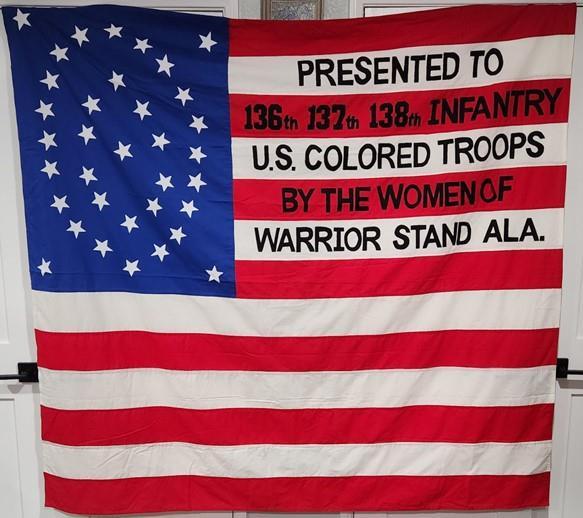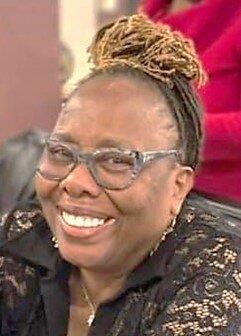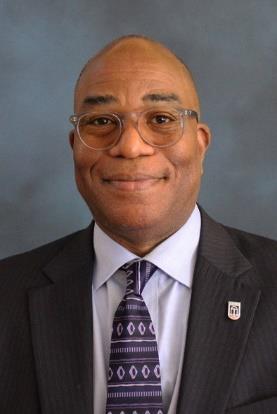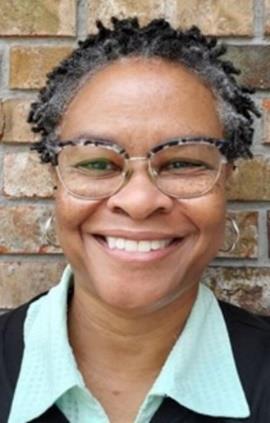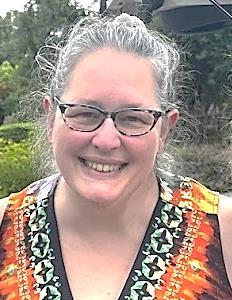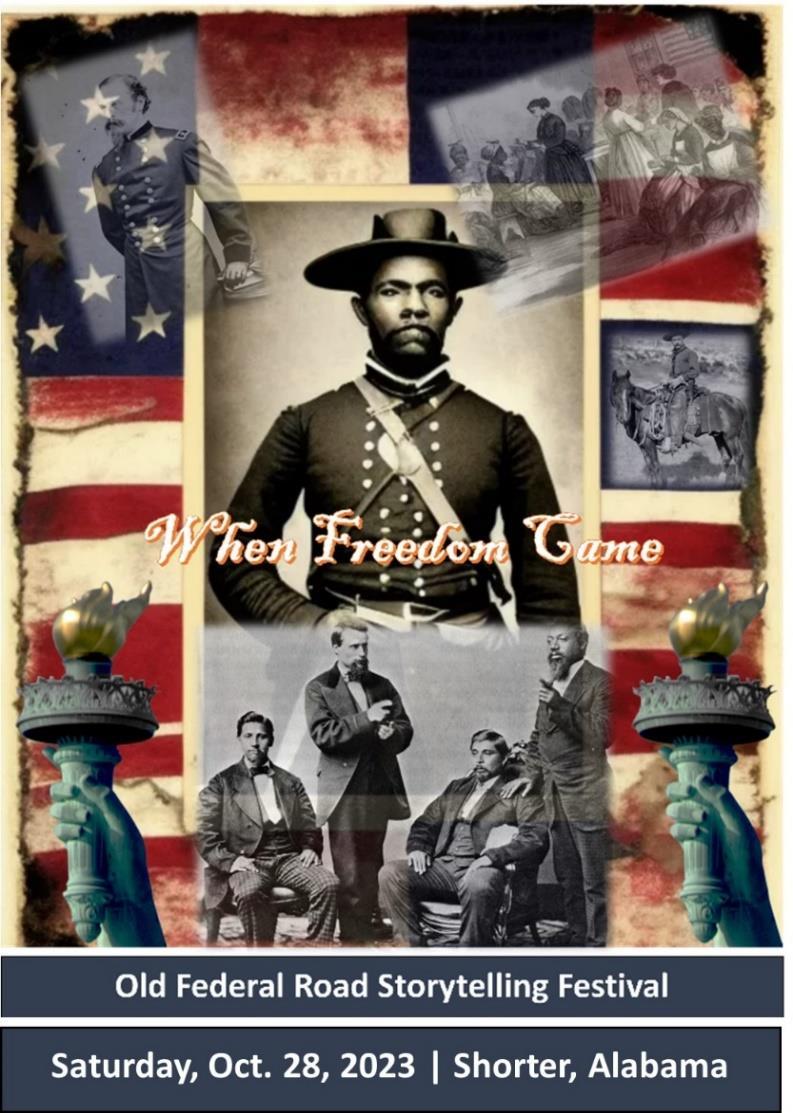
Presented by the Ridge Project and the Town of Shorter, Alabama

https://digtheridge.com

Our mission is to provide classroom resources and educational programs and events about our region's historical and cultural significance for the benefit of students, teachers, the local community, and visitors of all ages.

https://shorteral.gov

Funded by a generous grant from the Alabama State Council on the Arts
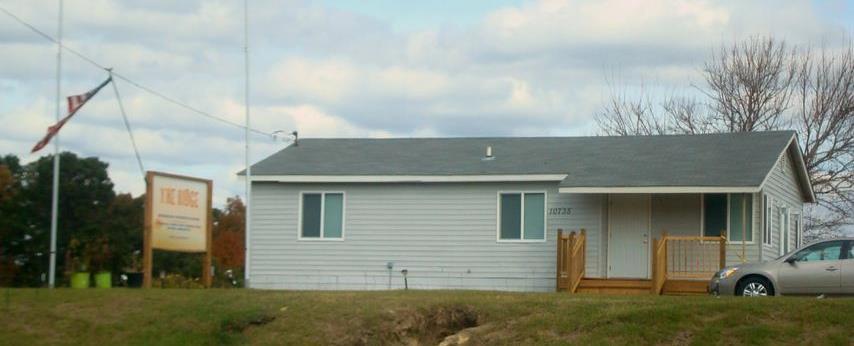
Ridge Project Interpretive Center
10735 County Rd 10

Union Springs, AL 36089
Physically located on Macon County Road 10 about nine miles south of Tuskegee
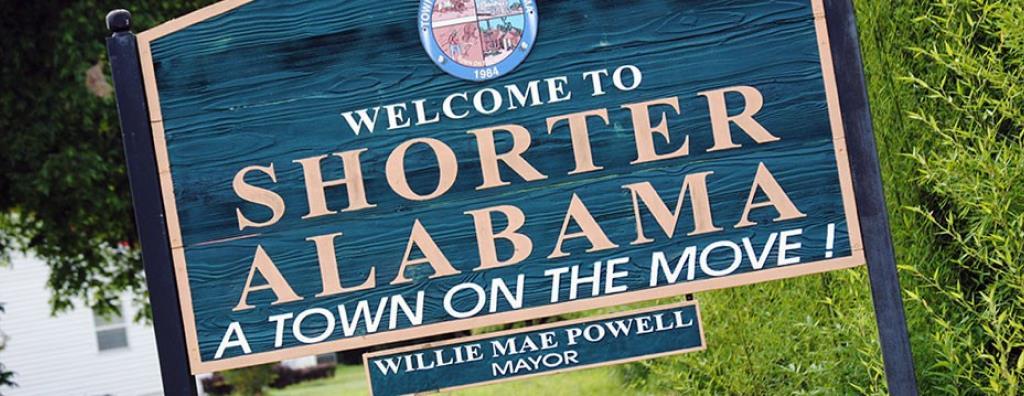
Shorter is a new small town with great potential for growth and development. Located strategically off of U.S. Interstate 85 and U.S. Highway 80 in Macon County, Alabama, Shorter is 20 minutes from downtown Montgomery and only 35 minutes from Auburn. The town of Shorter has become the model for a small community by enacting progressive measures in economic development such as: 20-year planning, website development, police and fire protection, water and sewer investment, recycling and creating regional partnerships in economic development. Each day, new jobs and homes are developed here. The only thing missing is you. Stop by and find out why Shorter, Alabama is “A Town on the Move!”
1
The 2023 Festival is funded bya generous grant from the Alabama State Council on the Arts https://arts.alabama.gov/
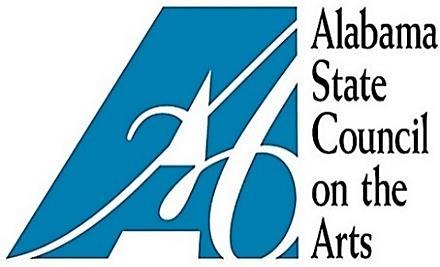
Venue – Old Shorter High School/Shorter Elementary School
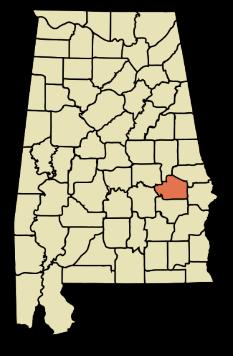
Macon County, Alabama




2
Old Shorter School
Cubahatchee Bapt. Church
Macon County Road 8 – A.K.A.
Old Federal Road Highway 80
Sponsors

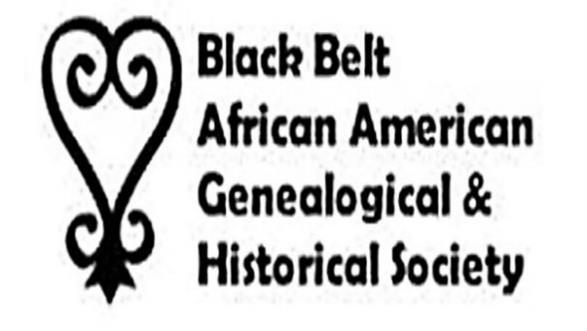
The Black Belt African American Genealogical & Historical Society, Inc. (BBAAGHS) is a nonprofit organization dedicated to the study and exchange of information and ideas among people interested in African American genealogy, family history and historicpreservation of the twelve counties of Alabama's Black Belt Region Bullock, Choctaw, Dallas, Greene, Hale, Lowndes, Macon, Marengo, Perry, Pickens, Sumter and Wilcox. We invite you to join us in our regular meetings, workshops, and conferences. Network with us and become further integrated into the richness of our Alabamian culture. Debra Harton Love, President. Website: https://bbaaghs.com
3
Greetings!
The Ridge Project Board of Directors and the 2023 Old Federal Road Storytelling Festival Planning Committee welcome you to the 2023 Old Federal Road Storytelling Festival!
We began developing the theme and ideas for the 2023 festival just as we were wrapping up the 2022 festival. The Planning Committee began meeting in early 2023. We extend our thanks and appreciation to our generous grantor the Alabama State Council on the Arts (ASCA) and to our sponsors the Caroline Marshall Draughon Center for the Arts and Humanities (CMDCAH), and the Black Belt African American Genealogical and Historical Society (BBAAGHS) for making it possible for our plans to come to fruition.
We extend a special thank you to the many volunteers and supporters who helped to present the festival, including the Town of Shorter for donating the venue, security, equipment, and other necessities for the safety, comfort, and convenience of festival attendees. We also thank Mr. Richards for donating the use of our mainstage tent and we thank his staff for set up and take down. Thank you as well to Macon County School Superintendent Dr. Melissa Williams, to Ms. Brelinda Sullen, Principal, and Ms. Monica Hasley, Media Specialist and Reader’s Theatre Director, Booker T. Washington High School, to Ms. TriShonne Cornelius, Principal, and Mr. Dennis Powell, Shorter Outreach Afterschool Program Teacher, D.C. Wolfe Elementary School, to Ms. Tiffany Williams, Principal, and Mr. Ferris Moore, Teacher, Tuskegee Public School, and to Ms. Rosemary Wright, and Ms. Kailea Floyd, Tuskegee Institute Middle School for your students’ participation in the Festival. Parents and family members, thank you for providing transportation for participating students.
Many thanks to Mrs. Candace Laubach (Johanna Robinson’s mom) and to Johanna for designing and sewing the United States Colored Troops flag to honor the 136th , 137th, and 138th Regiments from Macon County. The flag is featured on the back cover of this booklet. To Dr. Lisa Bratton, Tuskegee University Associate Professor of History, thank you for your students’ participation as volunteers, and thank you TU student volunteers.
Thank you to all our vendors and exhibitors. To all who have contributed to making the Festival a success, we appreciate you!
Sincerely,
The 2023 Old Federal Road Storytelling Festival Planning Committee
Mr. Dennis Powell, Town of Shorter
Ms. Johanna Robinson, Escondido, California
Ms. Ellen Tolbert, Tuskegee
Ms. Melanie Tolbert, Tuskegee
Mr. Guy Trammell, Tuskegee
Dr. Shari Williams, The Ridge Project
4
Festival Schedule
(Subject to change)
Multilingual greeting and Old Federal Road skit – Students from the Shorter Outreach Afterschool Program at D.C. Wolfe ES led by Mr. Dennis Powell, Teacher
Ancestral and Land Acknowledgements – Councilwoman Jackson
Introductions, Announcements, Grantor and Sponsor Recognition – Dr. Shari L. Williams, Ridge Project & Festival Planning Committee
4:25 – 5:00 Closing remarks –Mayor Willie Mae Powell, Shorter City Council, and Tuskegee City Councilwoman Norma M. Jackson
Grantor and sponsor recognition – Dr. Williams and Mr. Trammell
Multilingual good-bye – Mr. Powell’s students
5
Time Activity/Segment & Person(s) Featured 9:00 – 10:00 a.m. Welcome - Shorter Mayor Willie Mae Powell & Tuskegee City Councilwoman Norma M.
Jackson
10:05 – 10:30 Community Storyteller – Town of Shorter Councilman Edward Pollard 10:35 – 10:45 Awards – Tuskegee Institute Middle School Infographic Contest Winners 10:50 – 11:15 Community Storyteller – Mr. Guy Trammell 11:20 – 12:00 Parade featuring Ruff Rydaz Horse Club and Tri-State Auto Club Antique
Show Parade with
from club
12:00-12:30 Lunch –
1:00 Musical Performance –
1:05-1:30 Community storyteller –
1:35
2:50 Reader’s Theatre Performance – Booker
3:20 Musical Performance
3:25 - 3:50 Community Storyteller -
of
Desiev Howard 3:55 – 4:20 Community
Car
remarks
representatives
vendors. Announcements, grantor, and sponsor recognition – Mr. Trammell 12:30 –
Mr. Bill Perry
Mr. Verner Guthrie
–
T. Washington HS Students 2:55 –
- Inspirational Voices of Shorter
Town
Shorter Councilman
storyteller – Chief Michelle Gilmore, Southeastern Mvskoke Nation - Troy, Alabama
Presenters
(In order of appearance)


Town of Shorter Mayor Willie Mae Powell is a native of the Shorter community. She is a retired educator of the Macon County Public School System. She is the founder of the Shorter Outreach Afterschool Program, in which the students of Deborah Cannon Wolfe learn foreign languages, history, martial arts, S.T.E.M., physical fitness, and character development. Mayor Powell has represented the Shorter community as mayor for over 25 years, bringing about businesses, sewage systems, gas stations, and manufacturing plants. Mayor Willie Mae Powell is a true pioneer for Shorter and Macon County, Alabama.
Festival Emcee Norma McGowan Jackson (Umi Iyabode) is a native of Tuskegee Institute, Alabama. She is a retired public school educator, founder and director of Baobab Journey Rites of Passage for Girls, a founding member of the Core Group of Infinite Possibilities, and one of three founding members of the South Macon Community Foundation. Norma served more than two decades as the chapter Coordinator for the Amandla Chapter of 21st Century Youth Leadership Movement. She currently serves as president of the Macon County chapter of Alabama New South Coalition. Her spiritual foundation is rooted in the Greenwood Missionary Baptist Church.
Norma received her B.S. degree from Tuskegee Institute, (now University) in 1978, and the M. Ed. from Auburn University at Montgomery in 1987. Norma was employed by the Macon County Public Schools for 25 years as the kindergarten teacher at South Macon Elementary School. Since her retirement in 2003 she has served as director of Tiger Tots Daycare Center in Opelika, Alabama, and retired from Lee County Youth Development Center, also located in Opelika, in January of 2020.
In August of 2020, Norma was elected to the Tuskegee City Council for District 1, which primarily represents the Village of Greenwood, and Tuskegee University. She hopes to be the catalyst for the revitalization of the community where she was born and raised and continues to reside.
Married to her high school sweetheart, Grover Jackson, Sr. for 49 years, Norma is the proud mother of two adult children, and the proud grandmother of ten amazing grandchildren.
6
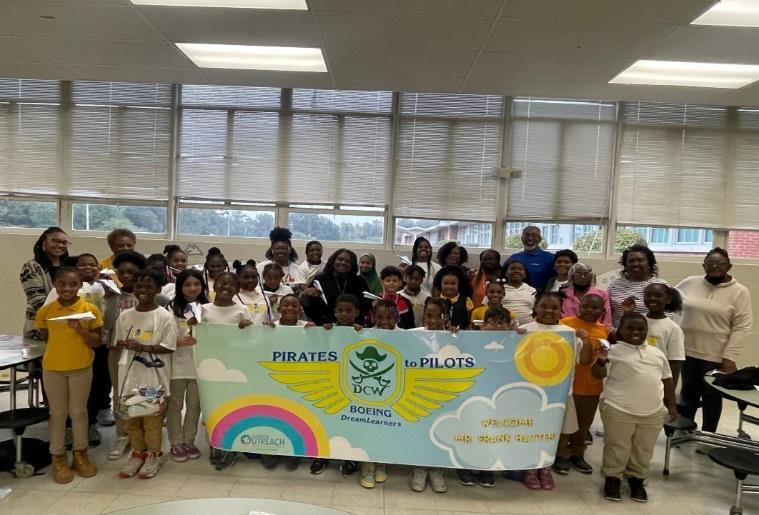
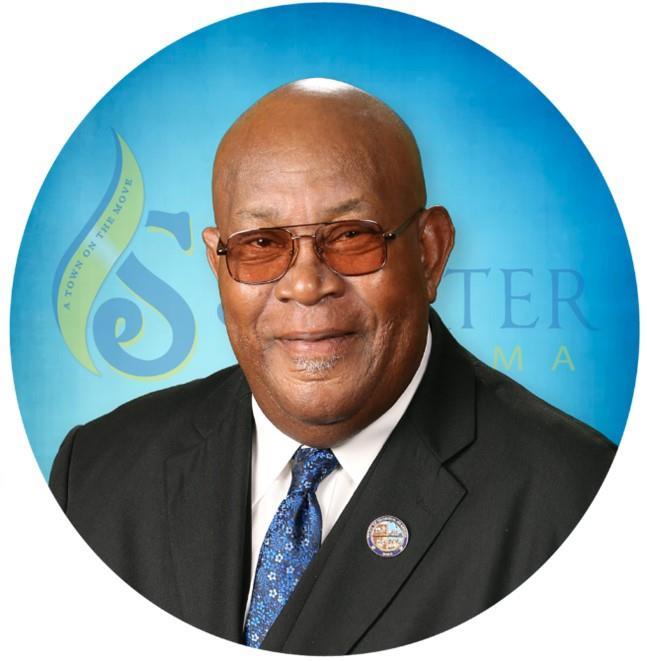
The Shorter Outreach Afterschool Program operates at the D.C. Wolfe Elementary School in Shorter, AL, Ms. TriShonne Cornelius, Principal. The program serves students ranging from kindergarten through the sixth grade who participate in after-school classes and extracurricular activities. Students of the afterschool program have participated in a wide range of enrichment activities, such as visiting Alabama State University, growing and selling vegetables, bath soaps, and other accessories. Mr. Dennis Powell is a teacher for the program.
Town of Shorter Councilman Edward Pollard is a native of Shorter, Alabama, and has a wealth of knowledge on Shorter, Alabama, and Old Federal Road in particular. Councilman Pollard has served as a council member for over twenty years. During his tenure, Mr. Pollard has played an essential role in helping develop Shorter, Alabama, into the town it is today.
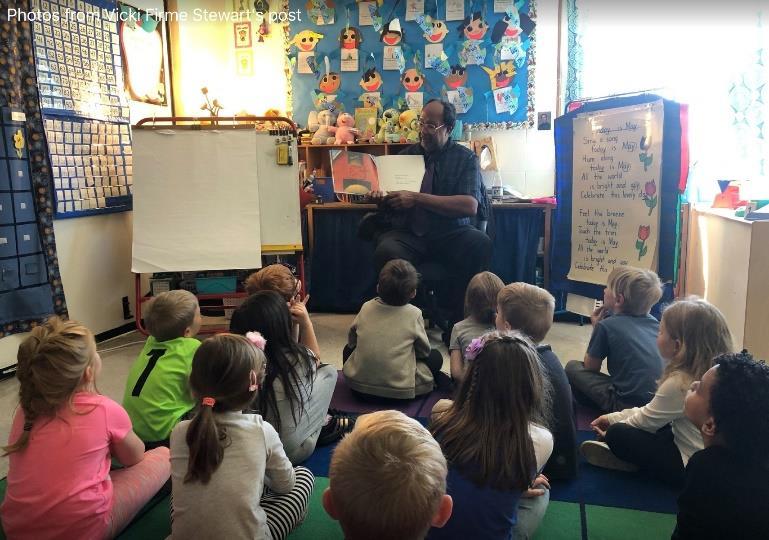
Guy Trammell is a trainer for Community-based Group Therapy and, for “Family to Family” the Substance Abuse and Mental Health Services Administration (SAMHSA) approved mental illness education program, under the National Alliance for Mental Illness (NAMI). He is the director for the Macon County Ministers’ Council Food Pantry. He is chair for The Collective 46 Inc. a communitybased telehealth fiber network provider, in Macon County, Alabama. He is the historian for the City of Tuskegee, a member of the Tuskegee Historic Preservation Commission, and a founding member of the Macon History Network. His book “Macon 365” is a calendar based history of Macon County, Alabama. He is founder and CEO of Macon Stories, an educational service interpreting the history of Macon County, Alabama to youth and tourists.
7

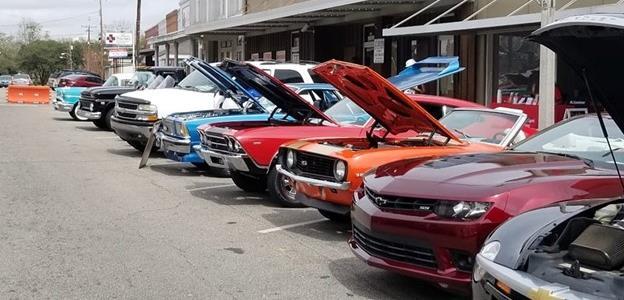
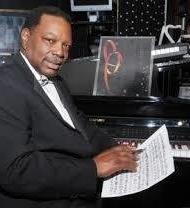
The Rough Rydaz Horse Club is an organization of riders who showcase their horses throughout the state of Alabama. The club is based in the Shorter community and was formed in 2008. The Rough Rydaz Horse Club mesmerizes crowds throughout Macon County with its elite horse-riding skills.
The Tri-State Auto Club is one of the most popular attractions in all of Macon County. The club participates in car shows in Bullock, Lee, Tallapoosa, Macon, and Montgomery counties. The Tri-State Auto Club contains one of the most elite car collections in the state of Alabama.
Bill Perry is a composer, arranger, producer, pianist, and entrepreneur. He began formal training at age 8 with piano. His first recording opportunity came at age 12 on trumpet. At Tuskegee Institute he joined the Greater Saint Mark Missionary Baptist Church and its music department and performed with local and regional musical, theatrical and entertainment groups, and with Tuskegee Institute (now University) marching, concert, and jazz bands. Bill met two incredible teachers, Warren Duncan, former Tuskegee University Director of Band, and the late Bobby “Bob Tail” Owens, a guitarist who is an Alabama Jazz Music Hall of Fame honoree. James Anthony, producer for the "Commodores" and Lionel Ritchie were great influences as well. Bill performs at the Tuskegee Repertory Theater, the Tuskegee History Center, and other venues. He has shared the stage with the legendary Harry Belafonte, Grammy Award winner Jennifer Holiday, and R & B legend Peggy Scott Adams. Bill perceives the total embodiment of music as something embracing not just a single genre, but rather a blending of all in a tasteful, creative, and spiritual way.
8

Verner Guthrie was raised on a farm in the Notasulga area of Macon County. His father was a cotton and poultry farmer and his mother a devoted farmer’s wife who were both active in local community and church affairs. Verner remembers sitting on the front porch and backyard patios of his house listening to stories of the “good ole days” of country living and farm life. Verner attended what was then called Macon County High School and graduated in 1973 under the school’s new name of Notasulga High School. He received a four-year Army ROTC scholarship to Auburn University. He earned a BS degree in geology from Auburn and was commissioned a second lieutenant in the Army on the same day in 1977. Before entering active duty in the Army, he attended the University of Georgia and earned an MS degree in geology. He then spent close to 6 years in the Army Corps of Engineers on active duty serving in Germany and Virginia. After his service time, he worked 25 years as an Army Corps of Engineers scientist doing research and development in the area of mapping and remote sensing specializing in imagery from space satellites and aerial platforms. Upon retirement he returned to the same house he grew up in. He considers himself a gentleman farmer. He and his wife Harriett have five adult children. His hobbies are gardening, landscape oil painting, writing and doing volunteer work with his church and community.

Congratulations to Ms. Monica Hasley and students from Booker T. Washington High School, Tuskegee, Alabama, Ms. Brelinda Sullen, Principal. We are excited about your debut Reader’s Theatre performance of “When Freedom Came.” See the Reader’s Theatre program for Ms. Hasley’s bio and a listing of student cast members.
9
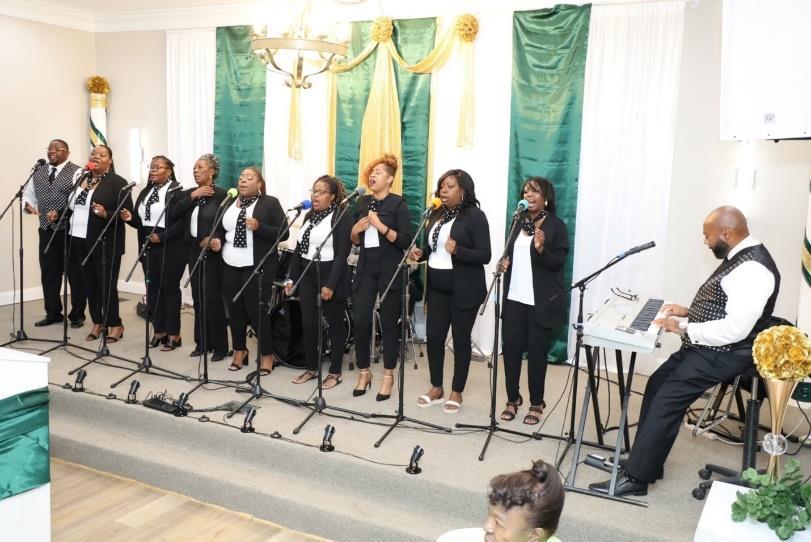
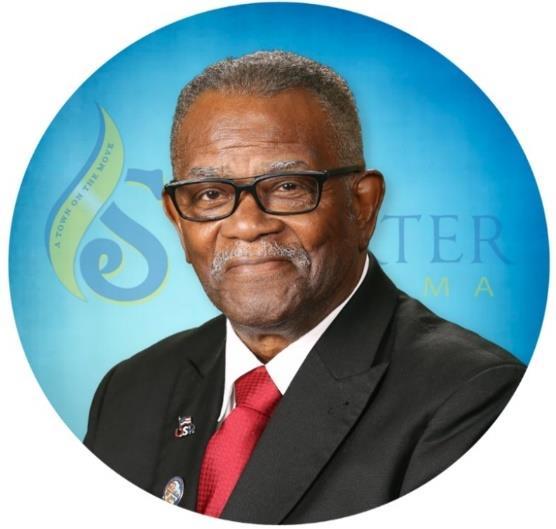
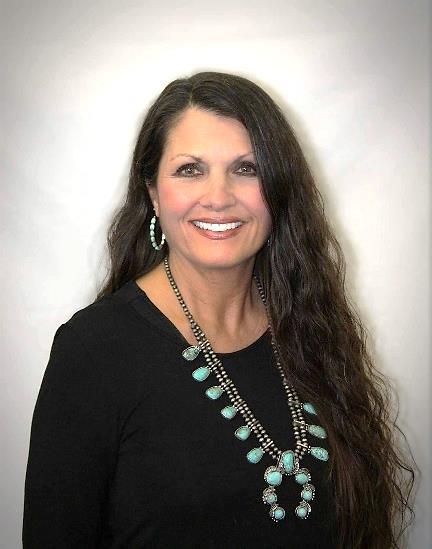
The Inspirational Voices of Shorter, led by Quinton Jeter, are considered to be the sound of the Shorter Community. Formed in the early 90’s, this gospelbased group performs at funerals, special events, and weddings. The group has released two albums, "Can’t Praise You Enough” and the Christmasthemed “Oh Holy Night.”
Town of Shorter Councilman Desiev Howard is a native of the Shorter area and has many memories of the Old Federal Road. Councilman Howard has served as mayor pro tem for over twenty years and is dedicated to serving his community. He is a member of Mary Magdalene Baptist Church in Shorter, Alabama, and possesses vivid memories of Old Federal Road and how it has evolved from his childhood to today. Councilman Desiev Howard is a dedicated and well-respected figure in the community.
Southeastern Mvskoke Nation Chief Michelle Gilmore was first elected as at-large Councilor before being appointed to Vice-Chief by former Chief Ronnie Williams. She was elected Chief in 2019. Chief Gilmore was appointed by Governor Kay Ivey of Alabama to serve as a Commissioner of the Alabama Indian Affairs Commission in 2022.
After Graduating High Schook Chief Gilmore entered the Paper and Printing Industry and became the first female in local market outside sales and went on to become the General Manger of a local paper company, before going to work at the Alabama Department of Transportation and serve her Tribe. Chief Gilmore is married to Retired U.S. Army Sgt. Major Gerry Gilmore and has four sons named Justin, Josh, Alex, and Max, and one grandson Levi.
The Chief is a strong advocate for the Tribes of Alabama and has a clear vision for the Southeastern Mvskoke Nation’s growth. Chief Gilmore recently appeared on a PBS/APT documentary entitled “Another River to Cross” that documents the history of the Alabama Creek Indians to raise awareness for the Indigenous issues.
10
2023 Festival Planning Committee
Town of Shorter Special Projects Manager, Historian, and D.C. Wolfe
Afterschool Program Teacher Dennis Powell chronicles and showcases the history of Shorter and surrounding communities of the West Macon region. Mr. Powell has partnered with Auburn University to procure grants, develop children’s books, and register the Cubahatchee African American Memorial on the Alabama Historic Cemetery Register. As an after-school teacher, Mr. Powell teaches French, Spanish, and history for 1st through 6th graders.
Johanna Robinson resides in Escondido, California but is deeply emersed in Macon County history by way of her spouse’s ancestral roots in Warrior Stand, Macon County. She is an avid genealogist & professional Project Manager. She volunteers extensively with nonprofit & for profit organizations mentoring technology & business entrepreneurs. Mrs. Robinson attended the 2022 OFRSF and served as a volunteer logistics coordinator. She is a co-author of the Reader’s Theatre play “When Freedom Came” along with Dr. Williams.
Ellen Tolbert has twenty three years serving in the capacity of secondary Mathematics, Aerospace Technology, Computer Science, and STEM Educator for the Macon County School District. She holds a Master of Science degree in Mathematics, Secondary Education, and a Bachelor of Science Degree in Electrical Engineering.
Ms. Tolbert currently serves on the GTL (Golden Teacher Leader) school improvement committee at Booker T. Washington High as well as Mathematics Department Head, Senior Advisor, Robotics Club facilitator, Golden Ambassadors and National Honor Society Sponsor. Prior to becoming an educator, she served as Lead Project Engineer for two major Weapons Defense Programs in California and Virginia for nearly nine years. During her tenure in Macon County, she has served in many capacities, employing her ability as a TEAM leader, Math Liaison, facilitator, and instructor to craft many educational initiatives to enhance the learning spectrum for students at her school, church, and within her community. Ms. Tolbert is the mother of four and wife of thirty five years. She serves on the board of directors as President for Next-Step Up- a mentoring and tutoring program started by her daughter Elise Tolbert in 2010 to serve students within the Macon County School District.
Ms. Melanie Tolbert is a life-long Tuskegee resident. She is a product of Macon County Schools and is a Tuskegee University student.
*See pages 7 and 11 for bios for Planning Committee members
GuyTrammell and Dr. Shari L. Williams
12
MACON COUNTY, ALABAMA’S UNITED STATES COLORED TROOPS
By Shari L. Williams, Ph.D.
“The Civil War was a seminal event in the history of black people in the United States…Yet for no group of African Americans was the transformation quite so dramatic as for black soldiers. In a brief period, many of these men went from powerless chattel to armed warriors in what was effectively an army of liberation.”
Donald R. Shaffer, After the Glory: The Struggles of Black Veterans
The United States Colored Troops (USCT) were regiments in the United States Army during the Civil War composed of mainly African-American soldiers who served in infantry, cavalry, engineer, light artillery, and heavy artillery units. Other people of color served but in minor numbers. By the end of the Civil War, 175 USCT regiments constituted about one-tenth the manpower of the Union Army.
Until 1862, African-American men were prohibited from bearing arms for the U.S. Army by Federal law dating from 1792. Blacks sought entrance into military service early in the Civil War but were banned as they were considered to be generally inferior and even more so, considered to be less than men by a majority of whites. President Abraham Lincoln opposed recruiting black soldiers early in the War because he feared that white soldiers would not serve alongside Black soldiers. But as the conflict wore on manpower shortages emerged. The manpower shortage, the increasing numbers of African Americans who left plantations and sought refuge with Union Army troops, and Frederick Douglass’s urging helped to change Lincoln’s mind. In response to the to the declining number of white volunteers, the government reversed the ban on recruiting Black soldiers.
In July 1862 Lincoln issued the Second Confiscation and Militia Act which authorized the use of African Americans in federal service, partly in response to the declining number of white volunteers. The Second Confiscation Act freed enslaved people who were owned by Confederates. The Militia Act authorized the President to use freed slaves in any capacity in the Army. Lincoln issued the preliminary Emancipation Proclamation on September 22, 1862. It provided for all slaves in the rebellious states to be freed if the rebels did not end the fighting and rejoin the Union by January 1, 1863 Heavy recruitment occurred after that date and the U.S. Army’s roll of Black enlistees mushroomed by the spring of 1863, necessitating further government action to manage them. The United States War Department issued General Order Number 143 on May 22, 1863, establishing the Bureau of Colored Troops to facilitate the recruitment of black soldiers to fight for the Union Army.
Most Black Union Army soldiers served in “noncombat support functions” that encompassed garrison duty and manual labor, but others experienced combat, especially near the end of the war due to further shrinkage of personnel from death and expiring enlistments of white soldiers. Estimates are that approximately 179,000 African-American men joined the Union Army throughout the course of the war and that 200,000 served in the Union Army and Navy.
Macon County, Alabama can boast of its own USCT soldiers. They are men of the 136th, 137th, and 138th Regiments who joined a historic Union Army campaign called Wilson’s Raid are noteworthy based on documentation of their experiences as revealed by the pension depositions they provided as veterans in the late 1800s and early 1900s. The men were from Warrior Stand which is and was an unincorporated Macon County rural village but is also the name given to Voting Precinct Four that includes the villages of Boromville, Creek Stand, Roba, and Dawkins. The men from these villages joined the Raiders near the end of the Civil War.
13
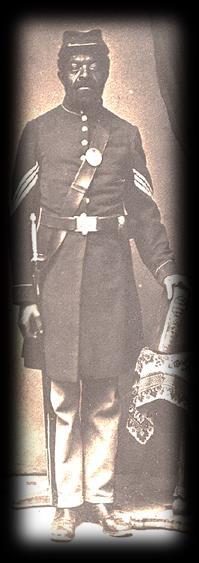

Wilson’s Raid, led by the Union Army General James Harrison Wilson (1837-1925), was a robust military campaign from west Alabama to Macon, Georgia that occurred in the spring of 1865. Wilson’s Raiders destroyed Confederate munitions depots, manufacturing facilities, and infrastructure such as rail lines, ironworks, schools, and rail cars. The Raiders moved eastward to Montgomery, Tuskegee, and Opelika. They spent time in Macon County in April 1865. Commanders sent Raiders to scout and locate a suitable campground. Historical accounts indicate that the Raiders established a central camp along present-day U.S. Hwy 80, likely near Society Hill. Scouts visited the Read plantation and adjacent plantations. African-American men voluntarily left the plantations April 10-14, joined the Raiders and traveled with them to Columbus, Georgia. Eventually the Union Army mustered the men in to the 136th, 137th, and 138th Regiments of the United States Colored Troops Infantry. The map below shows the path of Wilson’s Raid.

(Source: https://warfarehistorynetwork.com/article/the-last-long-ride-wilsons-selma-raid/)
14
Map of Wilson’s Raid From Alabama to Macon, Georgia
This 1911 map shows Warrior Stand in relation to the Raider’s route from Tuskegee to Society Hill.
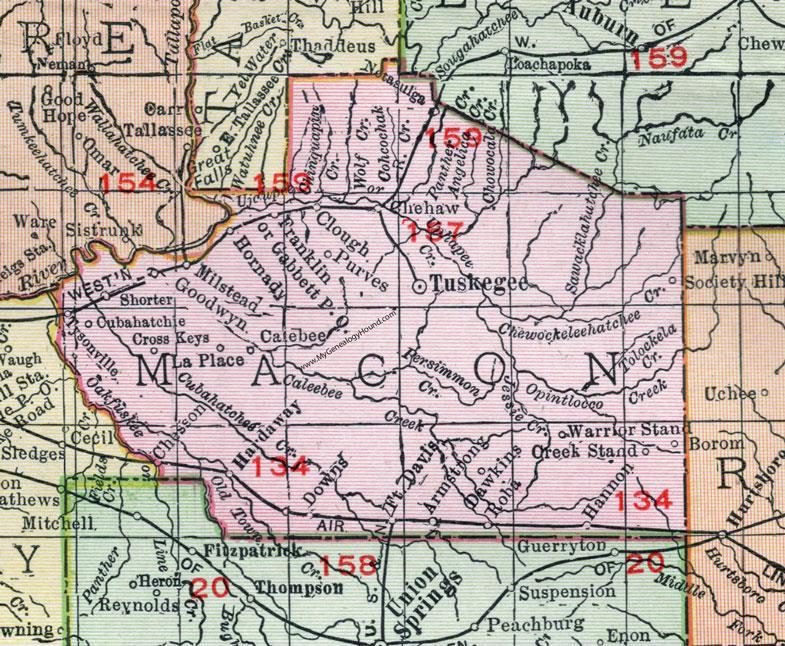
TUSKEGEE


WARRIOR STAND

SOCIETY HILL
(Source: http://www.mygenealogyhound.com/maps/Alabama-County-Maps/AL-Macon-County-Alabama-1911Map.html)
Through their show of courage, the United States Colored Troops refuted negative stereotypes about AfricanAmerican men. USCT regiments fought in all theaters of the war, but mainly performed garrison (guard) duty and manual labor. The USCT 54th Massachusetts Infantry Regiment is familiar through the portrayal of their unit in the 1989 film “Glory.” The 54th distinguished themselves as courageous combat Soldiers in July 1863 when they led the assault on Fort Wagner in South Carolina. As prisoners of war, USCT soldiers were subjected to extreme acts of violence at the hands of Confederates. Following the war, they served as occupation troops in former Confederate states and as Buffalo Soldiers in the western states.
Macon County’s USCT Soldiers and Veterans Face Union Army Discrimination
During the Civil War, the Union Army discriminated against the USCT across the board by paying them less than their white counterparts and by providing them with inferior equipment. For a time, USCT members could not become officers. Regardless, Black men enlisted and demonstrated loyalty, bravery, and courage in fighting
15
for the dual causes of Union victory and for their own liberty and the liberty of fellow African-Americans. In a way, the USCT’s dual cause foreshadowed patriotic Black World War II soldiers who also fought for a dual cause that was called the “Double V Campaign.” Double V represented victory to be won against fascism abroad and victory to be won against racism at home in the U.S.
The Union Army Pension Bureau continued to discriminate after the war although its pension policies and guidelines were supposedly “color blind.” Perhaps these policies were administered equitably in some locations. But the eligible Black veterans from Macon County, Alabama who applied for a pension during the late 1800s and early 1900s often faced the undue burden of proving their identities and dates and places of birth. They were subjected to “special examinations” during which examiners sternly questioned them with the presumption that Black veterans would lie about having served. The Union Army Pension Bureau disregarded the fact that Black veterans were formerly enslaved and as such, did not create or possess the vital records to verify their identities. While the Union Army’s discrimination was unconscionable, the detailed depositions provided by Black veterans from Macon County often provided important information about parents, siblings, other relatives, community members, enslavers, and details about their experiences while serving.
Depositions from Macon County USCT veterans given during late 1800s and early 1900s were made available by history researchers Ms. Joyce Davis, Ms. Johanna Robinson, and Dr. Shari Williams. Veterans were deposed by special examiners in conjunction with their own applications for pensions or the applications of their comrades. While being deposed, the veterans recalled the details of their experiences in the Union Army. Among those veterans are Private Allen Henderson (alias Allen Reid), Private Robert Howard, Private James Moore, Private Moses Moore, Private Carter Reid, Private Harbard “Harvey” Reid, Private Hudson Reid, Private Mack Reid, Private Manuel Reid, Private Sidney Reid (alias Sidney Mahone), Private Henry Pace, and Private James Pace. All served in the 138th Regiment except for Private Howard and the two Paces. They served in the 136th Regiment.
In 1904, a special examiner deposed USCT Infantry veteran Allen Reid as part of an investigation to verify the identity of USCT veteran Harbard Reid who had applied for a pension. Allen Reid told the special examiner about his experience with joining Wilson’s Raid, he identified others who had served in the 138th Regiment with him, and he identified his enslaver. He stated,
I am a farmer, P.O. address Borum [Boromville] Alabama. I am now known as Allen Henderson but I was the slave of Nathan Reid within 2 miles of Warrior Stand and served in the army under the name of Allen Reid as a private in Capt. Rogers company of the 138th U.S. C. Inf…I went away from Warrior Stand in April 1865 with Wilson’s raid and after we had worked on the R.R. [railroad] for two or three months I was made a soldier in Atlanta and served there in Atlanta until Jan. of the nest year when we were mustered out. Harbard Reid, Hutson Reid (dead), Sidney Reid now Mahone & Manuel Reid (dead) all from Warrior Stand were in the same company with me…My master Nathan Reid died when I was a little boy and I belonged to his widow Miss Eliza and her sons who were young men – some of them were older and some younger than I was.
During the deposition, Allen Henderson also disclosed that Harbard Reid was his uncle, thus giving presentday family history researchers further insight to determine which persons having the surname Reid were blood-related.
Pension bureau special examiners also obtained depositions from the family members and neighbors of veterans. The veterans’ depositions and those of family members and friends tell much about life before and after slavery in Warrior Stand and neighboring villages. The special examiner deposed Frances Moore, née Germany, in 1901in conjunction with Harbard Reid’s pension application for the minor children of his deceased
16

brother and fellow veteran Hudson Reid. This information confirms for present-day researchers that Allen Reid, Harbard Reid, and Hudson Reid were brothers. Frances Moore provided information that explained the closeness of individuals who were enslaved together. She stated,
I am the wife of Mose Moore who is a farmer. Hudson Reid, Harriet Moore his first wife, and I were all raised up together. We lived in sight of each other during slavery days and have lived in the same neighborhood ever since.
Hudson Reid’s second wife Louisa Turk was the mother of the minor children Fletcher, Rose, Ida and Hudson, Jr.
Frances’ husband Moses Moore, also a USCT Infantry veteran, was the brother of Eliza Reid, née Moore. Eliza was the wife of USCT veteran Harbard Reid. After Harbard Reid’s death in 1909, Eliza applied for a widow’s pension. The Union Army Pension Bureau dispatched a special examiner to investigate whether Eliza Moore had indeed been married to Harbard Reid. The special examiner deposed Moses Moore in 1910. Moses Moore’s deposition provides information about slave marriage customs between two enslaved people who lived on different plantations. He stated,
I am a full brother of the claimant for pension, Eliza Reid. I belonged to Dr James Moore until freedom, and I have continued to live in this vicinity to the present day. I know that Eliza, who also belonged to Dr Moore, married Harbord Reid, under the slave customs, about 1862. It was during the early part of the Civil War, and, to the best of my belief, it was in 1862. Harbord had been courting Eliza, and, under the customs prevailing at the time, Harbord came to the “Moore Place” with the written consent of his owners to marry Eliza. I was at the house when he came with the “license,” as we called such written consent of a owner, and I was there when he delivered the paper. Harbord and Eliza were then called out on the front porch, and each was asked whether they would have the other, and they were then told to join hands, and they were pronounced man and wife. Yes, sir, I am positive that all this ceremony was gone through, and the whole Moore family witnessed it. Dr Slaughter, who was a Justice of the Peace, asked the questions, and joined them together. From that time until they were freed, Harbord and Eliza were considered as man and wife under this slave custom, and Harbord visited her regularly every time his slave owners would give him permission. This was usually every Saturday night and Sunday, and sometimes on Wednesday night. This kept right up, right straight along until they were freed. Harbord nor Eliza had any other husband or wife from the time they took each other for man and wife, as stated, until freedom, or thereafter until the death of said Harbord Reid. Now, Harbord, went right back to the “Reid Place” and hired, immediately upon his discharge from the Army, and he remained on that place until the first part of 1867, when he came to Dr Moore’s place and lived, and lived there for several years. He visited Eliza once or twice a week during the time he lived on the “Reid Place” after his return from the Army, and, when he hired to Dr Moore they went to living together in the same house, and they lived together right in the same house, as man and wife, from 1867, until the death of the said Harbord Reid.
In 1911, a special examiner deposed USCT Infantry veteran Henry Pace of the 136th Regiment. The examiner peppered Pace with questions about his identity and his service. One incident that Pace recounted while being deposed has since been written about in history books. The incident that Pace described is known as one of the “last battles” of the Civil War that took place on the Alabama and Georgia banks of the Chattahoochee River near Columbus, Georgia on Sunday, April 16, 1865 from approximately 1:30 p.m. until 10:00 p.m.
Retrospectively, Pace’s recollection stands as incontrovertible evidence that Pace told the examiner the truth. Pace stated,
17
We were at home when the raid came and got brothers Jim and me and three others from our place – the others were Jimmie, Dennis and Beverly Pace. The raid came and got us in April – we were planting cotton when they came. My old boss always commenced planting cotton on the 10th of April and we were planting cotton when the raid came and carried us off. We were carried to Columbus, Ga. The raid got us five men and about ten or twelve mules from our place. We left home after dark on Saturday night and camped about 3 miles from home and we rode to Columbus, Ga Sunday evening. They crowded us colored folks all together on the Alabama side of the river while they had a little “scrimmage” and I was nearly scared to death because I could hear the guns shooting. We staid (sic) in Columbus from Sunday to Tuesday if I remember correctly and went to Macon, Ga.
Pace further described what happened after he arrived in Macon, Georgia. He explained,
[I] Don’t remember what day we got to Macon nor how long it took us to get there. We were kept in a camp there a right smart while – about a month I reckon – then went by train to Atlanta where they put us to working the RR from Atlanta out towards Marietta. The RR ties had been burned and the rails had been wrapped around trees and we cut and laid new cross ties and straightened the rails and spiked them down. The RR that we were working on run from Atlanta to Chattanooga. After we had worked out some distance, I can’t tell about how far, we met another crowd who were working towards us and the work was then finished. After the work was done on the RR, they put the blue uniforms on us and gave us our guns and began to drill us. I think they swore us in there before they commenced to drill us…All five of us Pace slaves staid (sic) together until the work on the RR was finished and all of us were mustered in as soldiers and all of us, I think, excepting Dennis were members of company B 136th U.S. Col Inf. I think Dennis Pace said that he was in Co. G. All five of us enlisted and severed under the name of Pace.
Conclusion
This essay includes information that is based on several veteran’s pension depositions that have been obtained from the National Archives and Records Administration (NARA) but many more Black men from Macon County served in the 136th, 137th, and 138th Regiments. The U.S. government viewed Black men’s enlistment in the Union Army as a solution to a personnel problem, but Black men viewed their participation much differently. Whether they were assigned to garrison duty, manual labor, or combat, the United States Colored Troops saw their service, according to historian Donald Shaffer, as a “quest for manhood.” The depositions on hand from the men who served in the USCT 136th, 137th, and 138th Regiments provide valuable information for family history researchers and verify that military service afforded newly freed African-American men the first institutionalized opportunity to prove themselves as men. As quoted by Shaffer, one humble USCT veteran stated, “I was eager to become a soldier, in order to prove by feeble efforts the black man’s rights to untrammeled manhood.”
For more information about the USCT, visit the NARA website at https://www.archives.gov/education/lessons/blacks-civil-war/article and the National Park Service Civil War Soldiers and Sailors System at https://www.nps.gov/civilwar/index
To determine whether an ancestor served in the USCT, conduct a search of Civil War databases at Ancestry.com – “Civil War Pension Index: General Index to Pension Files, 1861-1934,” “U.S., Civil War Soldiers, 1861-1865,” and “U.S., Colored Troops Military Service Records, 1863-1865.” Also visit Fold3 at https://www.fold3.com
18
Sources:
Davis, Lonnie J. “Georgia’s African Brigade: Slave to Soldier.” National Park Service - Ocmulgee National Monument, Macon, Georgia, 2018.
"Reid, Allen. Pension File #1348.437, Federal Military Pension Application Civil War and Later." U.S. National Archives and Records Administration, Washington, D.C.
"Reid, Harbord. Pension File #1247.500:930.135, Federal Military Pension Application--Civil War and Later." U.S. National Archives and Records Administration, Washington, D.C.
“Reid, Hudson. Pension File #970.810:719.708, Federal Military Pension Application Civil War and Later." U.S. National Archives and Records Administration, Washington, D.C.
“Pace, Henry. Pension File #123.7.930, Federal Military Pension Application Civil War and Later." U.S. National Archives and Records Administration, Washington, D.C.
Shaffer, Donald R. After the Glory: The Struggles of Black Veterans. Lawrence, Kansas: University Press of Kansas, 2004.
19
INFOGRAPHIC CONTEST WINNERS
In 2016, 2017, 2018, and 2022 The Ridge Project sponsored an art contest for Macon County students. This year, The Ridge Project invited students from Barbour, Bullock, Macon, Pike, and Russell counties to participate in a contest that focused on Alabama history, people, places, events, and folkways. We invited students in grades 4-5 to submit entries for an art contest, students in grades 6-8 to submit entries for an infographic contest, and students in grades 9-12 to submit entries for an essay contest.
For the second year in a row, we received infographic entries from Ms. Kailea Floyd’s students at Tuskegee Institute Middle School (TIMS), Ms. Rosemary Wright, Principal. The 2023 Storytelling Festival planning committee served as contest judges. We are proud to announce the first, second, and third place, and honorable mention winners from TIMS.
Prizes:
First Place – $100 and certificate
Second Place – $75 and certificate
Third Place – $50 and certificate
Honorable Mention - $25 and certificate
The entries are shown on pages 21-24.
Congratulations!
20
INFOGRAPHIC ENTRIES FROM TUSKEGEE INSTITUTE MIDDLE SCHOOL
First Place – Jordyn Pernell

21
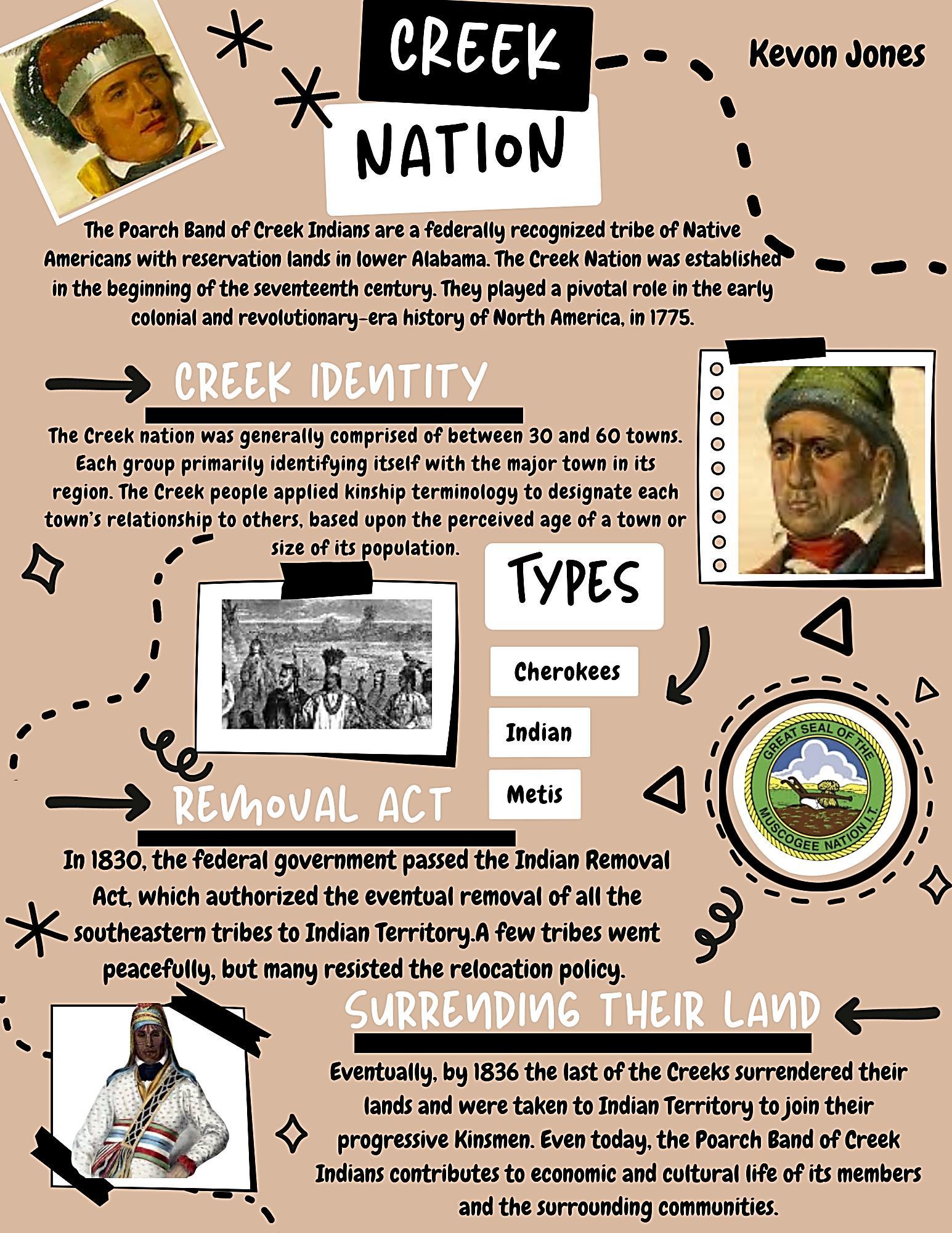
22
Second Place – Kevon Jones
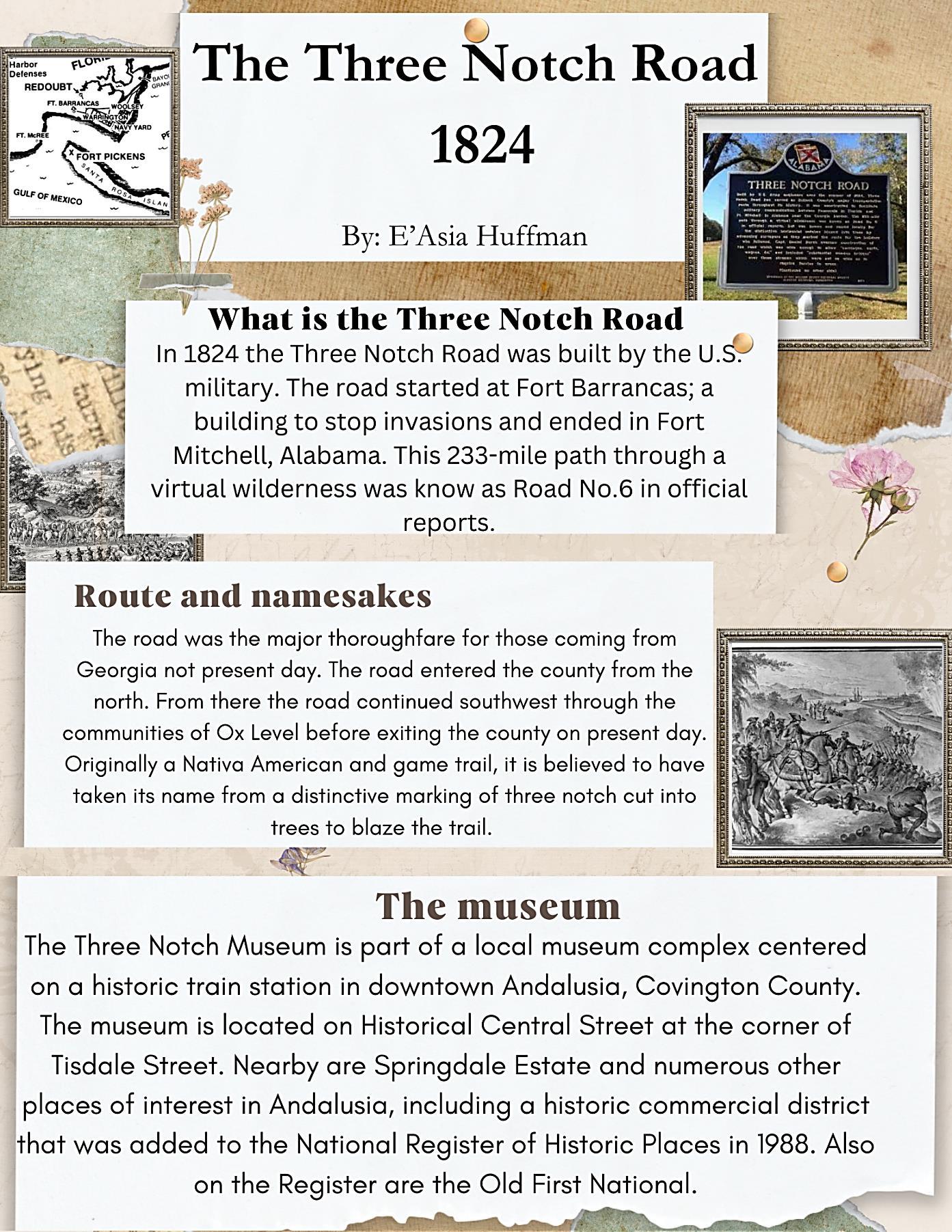
23
Third Place – E’Asia Huffman
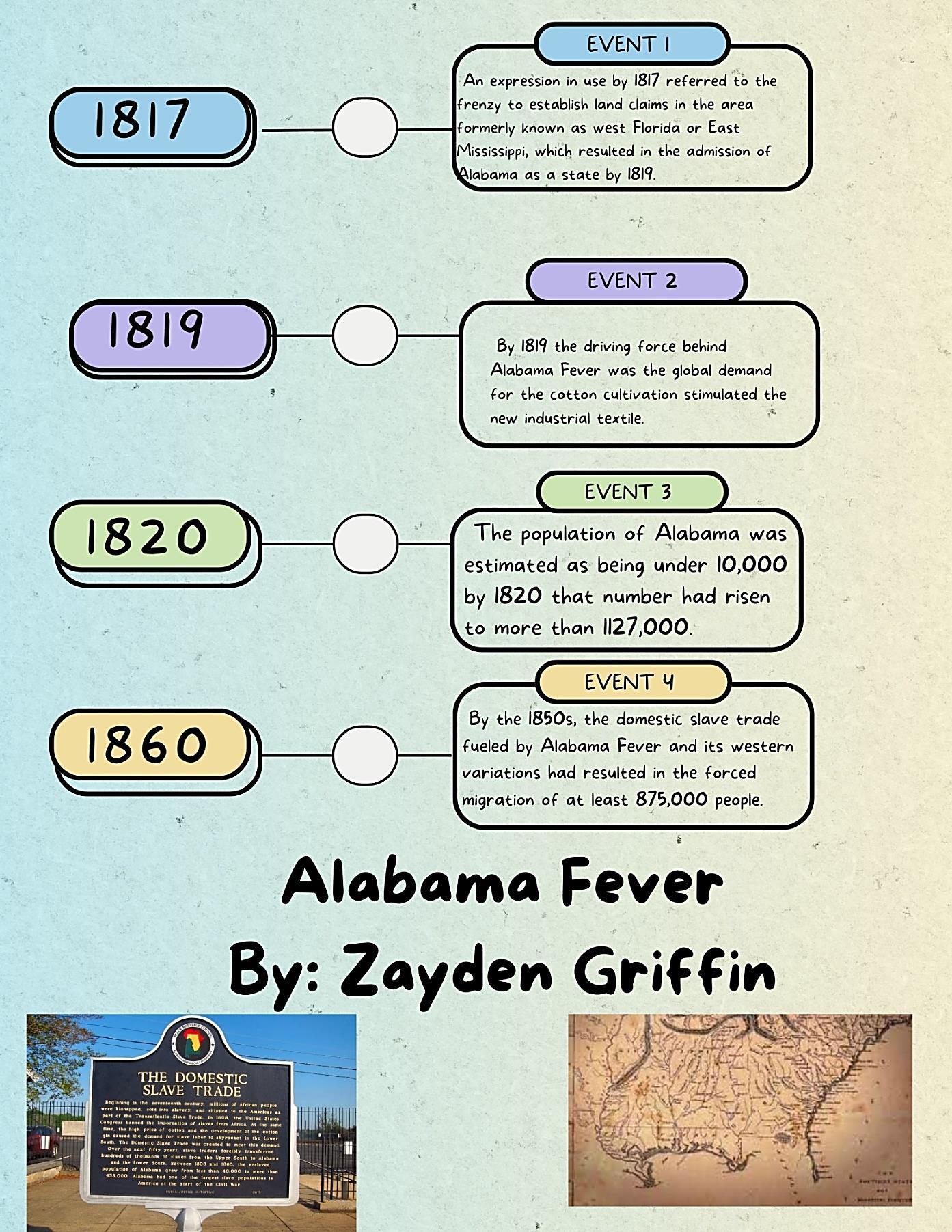
24
Honorable Mention – Zayden Griffin
